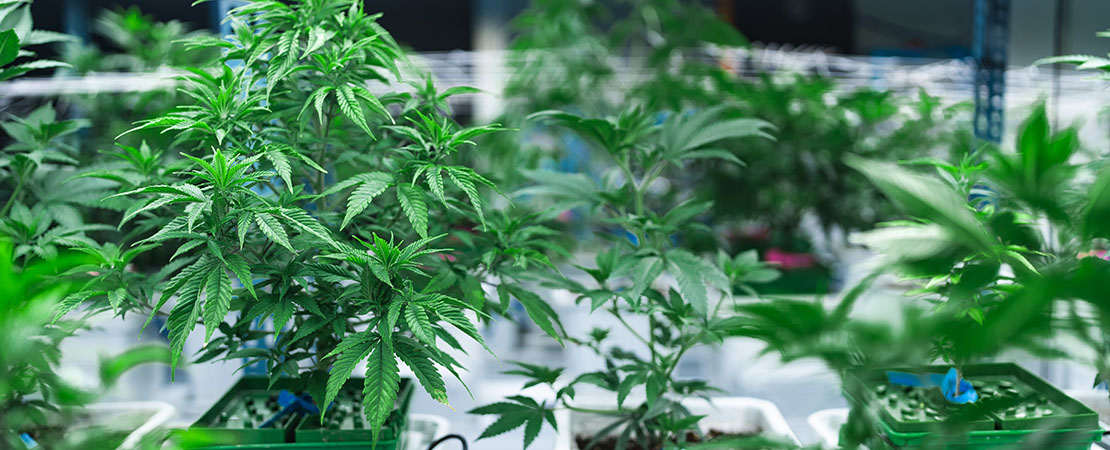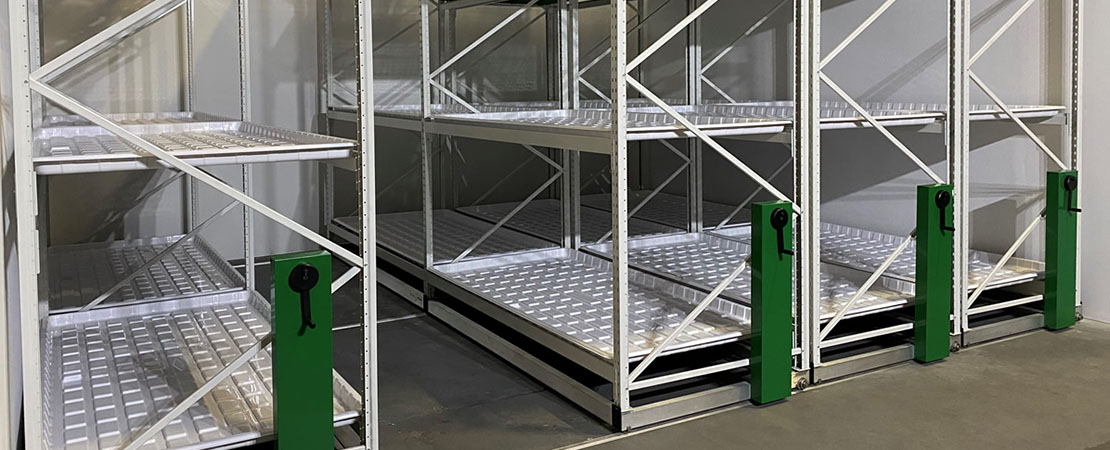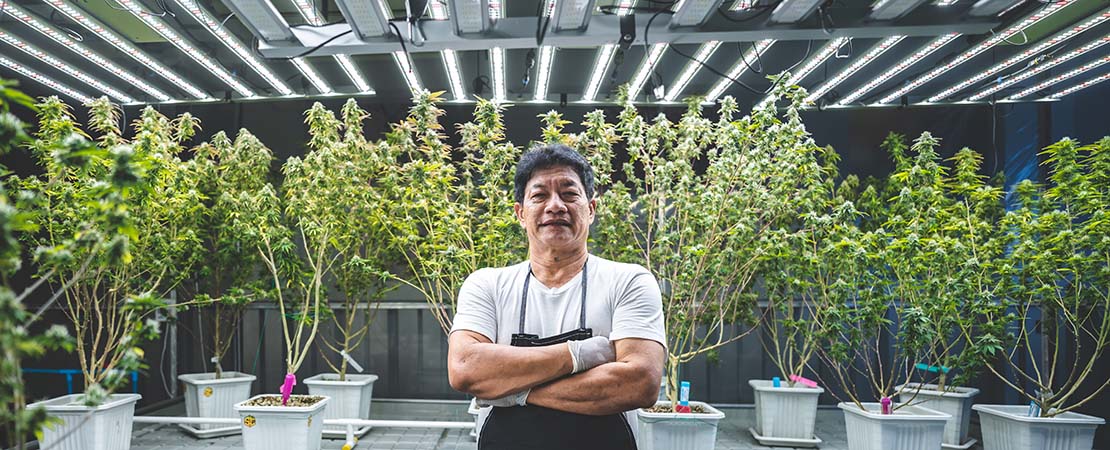What Are the Megatrends Shaping Indoor Farming?
Is cannabis indoor farming the future?
Increased food demand with decreasing arable land and unpredictable weather patterns has elicited a demand for changes within the agricultural sector.
Consequently, various stakeholders have devised innovative strategies, such as indoor farming, to combat these challenges.
Indoor farming is a cultivation method being leveraged to combat issues such as global warming, which is characterized by rising temperatures and frequent droughts that disrupt healthy plant growth.
Moreover, the practice has succeeded in mitigating upcoming disasters, such as the Covid-19 pandemic involving quarantine and border closures, affecting the food supply chain.
With this in mind, the agriculture sector needs to transform to use less water and chemicals while protecting crops from climate change to produce reliable yields sustainably.
Indoor farming plays into this solution as its an enclosed artificial controlled growing environment created to mimic outside conditions.
The practice utilizes Controlled environment agriculture to provide the right environment for plants to grow with less water and fertilizers and as an enclosed system protecting them from harsh weather conditions.
With the tall order on indoor farming as a modern agricultural solution, key innovations have emerged to establish it as a “future-proof” cultivation method.
Top 5 Emerging Trends Shaping Indoor Farming
1. Custom Plants
Indoor farming is at the epicenter of research on crops and their growth under optimized and simulated conditions. The approach of indoor farming has facilitated the growth of hybrid plants, hence even more refined cannabis plants.
The simulated conditions allow growers to try out new strains, providing consumers with even more variety and benefits.
Moreover, the controlled conditions of an indoor garden, such as lighting growers, can influence the potency and taste of crops to provide the desired results.
Indoor farms help produce the quality needed; for example, a new Zealand startup has devised a way to leverage UV light to imbue flavor profiles in plants.
2. A Variety of Crops
Indoor growing has traditionally focused on growing leafy greens like kale, lettuce, and spinach, as they are considered easy to grow in indoor vertical systems.
However, as the growing technology has improved, farmers have sought to find more profitable niches like vertical cannabis growing.
Indoor farming provides the opportunity to grow crops even during harsh weather, as the closed system helps protect delicate crops.
Moreover, various farms have sought to grow anything in vertical farms, from strawberries to barley. Notably, using vertical farming systems allows for a lucrative business as by “growing up,” you can have more yields for every square foot of space.
As cannabis has continued to be legalized, this has opened up a profitable channel in the indoor growing space.
Cannabis plants have a variety, such as Indica, Sativa, and Hybrid strains which all have different growing requirements bringing about various challenges and benefits.
For example, Indicas are short; hence you can incorporate multiple tiers of vertical systems; however, they are prone to molds.
On the other hand, Sativas are tall plants hence reduced tiers but are mold resistant. Finally, we have the hybrid strains they are the best of both worlds (Sativa vs. Indica) and easy to get flavorful produce while tweaking the lighting systems, among other conditions.
3. Automation In IndoorFarming
Automation is a crucial factor in vertical farming. It is used in irrigation systems to control the amount of water plants receive.
Its also used in nutrient delivery to quickly and sufficiently distribute nutrients to the plants as needed.
Moreover, you can control the lighting and ventilation systems.
Automation is necessary for vertical farms due to the scale of work involved for every indoor farming system. You get to plant on a grand scale; hence automation reduces the labor needs, boosting productivity with lowered risks of human error.
Automation also allows for less use of pesticides and herbicides while increasing yields due to complete control over the growing process.
Some of the key ways automation is used in vertical farming include
- AI and digital monitoring to mimic nature indoors by manipulating factors like climate, temperature, and nutrients
- Using IoT sensors and AI cloud systems to optimize and manage crop growth
- Automated arms and elevators for harvesting plants
- Seed-to-sale tracking of cannabis plants as required by various legislation
4. Big Data
Access to credible information can tip the scales on any major decision, be it on the war front or, in our case, building the ideal indoor farm.
Installing sensors within an indoor farm is helpful as you can collect data from various touchpoints in your grow room. The data collected can then be loaded into an operating system that analyses it and creates actionable intel.
The data analyzed can give insights into handling various critical aspects of the grow room, such as ventilation, CO2 levels, light intensity, and humidity levels.
Big data helps create the specific conditions needed to grow your crops. Hence you can grow a plant typically found in tropical regions indoors. As a result, saving time and preserving freshness hence better margins.
Moreover, with data, you can leverage fewer resources while producing high-quality plants.
The data is stored in cloud-based storage solutions where rules engines (machine learning/artificial intelligence) learn, predict, and adapt.
5. Vertical Growing Systems 
Indoor farming is also experiencing shifts in how growers are cultivating their crops. Growers are now using vertical growing systems to plant more crops, increasing their output per square foot.
Vertical growing systems are multiple shelvings or racks that help indoor farmers utilize their overhead space, whether in a skyscraper or warehouse. These systems include mobile carriages, vertical grow racks, and tabletop caster units.
These systems each bring a unique function within a grow space providing more variety for the grower:
- Mobile Carriages. These high-density steel shelvings sit on flange wheels, giving them mobility. Their mobility not only helps you utilize overhead space but also eliminates static aisles. By eliminating static aisles, you save 50% extra space as you create aisles.
- Vertical Grow Racks. This bulk racking made of 14 gauge steel allows farmers to extend their grow space horizontally and vertically. These sturdy grow racks are engineered to help you integrate your irrigation, lighting, and ventilation systems.
- Tabletop Caster Units. These multiple-tier units incorporate caster wheels, making it easy for you to transition between rooms. They are a resourceful product for growing seedlings. Moreover, they are the perfect fit for a homegrow or small-scale indoor farms.
In addition, there has been a development in the vertical systems space with key innovations like the Mezzanine walkway.
The walkway is a retractable decking design that eliminates the challenge of accessing plants at higher elevations. The walkway simply integrates with your vertical systems, and when in use, it’s pulled out, and you can easily tend to the crops at higher elevations.
Shift Into Indoor Growing Vertical Systems With MMI Agriculture
The indoor growing space is an emerging agricultural tend with so much untapped potential. It is an industry that is leading various innovations and facilitating new perspectives on advanced technologies like AI and machine learning, which are already shaping the modern world.
MMI Agriculture is committed to being a part of the solutions that shape indoor farming. We are dedicated to providing advanced and dependable vertical farming systems for the average indoor farmer.
Our vertical farming solutions include mobile carriages, vertical grow racks, and tabletop caster units. In addition, we offer bespoke vertical systems installation services to transition you quickly into indoor vertical farming. Contact us today for a quote.

